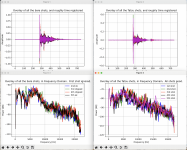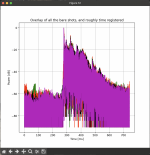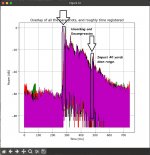Today when I was testing I pulled out the Donny FL Tatsu and ran it beside all the other moderators and the bare rifle.
I located the microphone 31 feet from the muzzle and 33 degrees (11 o'clock) left of the muzzle. This was done to reduce clipping. I still experienced some minor clipping with the bare rifle but we don't really care if the bare rifle appears to be making less noise than it really does, do we? Anyway it ain't much.
I should also mention this is on the Talon P which is a .20 caliber running 25 fpe.
I will further analyze this data when/if time presents itself.
Here is the audio shot for shot ordered bare, Tatsu, bare, tatsu ... bare, tatsu.
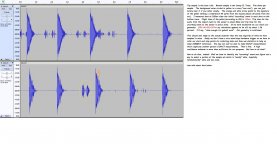
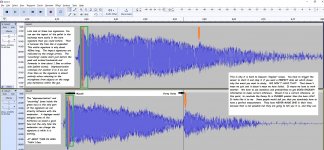
I located the microphone 31 feet from the muzzle and 33 degrees (11 o'clock) left of the muzzle. This was done to reduce clipping. I still experienced some minor clipping with the bare rifle but we don't really care if the bare rifle appears to be making less noise than it really does, do we? Anyway it ain't much.
I should also mention this is on the Talon P which is a .20 caliber running 25 fpe.
I will further analyze this data when/if time presents itself.
Here is the audio shot for shot ordered bare, Tatsu, bare, tatsu ... bare, tatsu.


Last edited:
